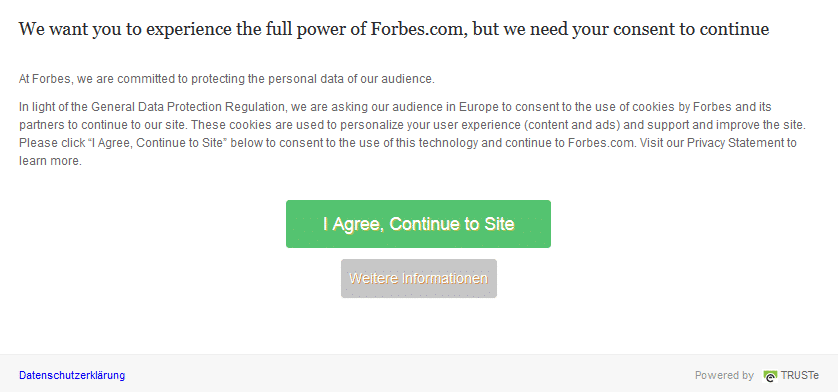
Contextual Targeting – the tried and tested is back in style
PR & Marketing
Posted 14 Apr 2020
Contextual Targeting is the data-sensitive alternative to the dominant cookie tracking
The European Union’s e-privacy regulation in 2018 brought fundamental changes for online advertising. Since then, website operators must consider the GDPR guidelines and actively seek and obtain the consent of users. Tracking through the use of cookies is particularly affected by this. Cookies are used by website operators and search engine operators to create personalized advertising or to optimize the sales funnel. Starting in 2020, this previously common practice will be made more difficult as an –GDPR additional regulation will take effect and users will have to actively agree to tracking. For this reason, marketers are looking for alternatives, and this is where contextual targeting, or contextual advertising, comes into play by allowing users to see., also called online advertising based on various keywords.
Contextual targeting is not a new invention but was standard at the beginning of online advertising. However, the refinement of cookie tracking meant that the technology was abandoned due to the higher accuracy of tracking cookies. Cookie profiles of users are typically built up over a longer time period and are based on the search history and complemented by further information. The above mentioned GDPR additional regulation now forces website operators to stop tracking cookies – unless the website visitors state their consent by an opt-in.

Currently, 80 percent of marketers still primarily rely on cookie data from third-party providers. However, this number is falling as alternatives are being sought and companies like Google are already working on refining their contextual targeting offering.
How to best place ads with contextual targeting:
Every operator must limit the subject areas of their website and pass on keywords derived from these to Google. Keywords can be single words or search phrases consisting of several words, while a subject area is more the concept or central theme of a website.
Example: Positive keywords can be found as keywords on websites and define the activity of the company in a positive way. However, the company does not want to be associated with negative keywords.
Google analyzes the content of each Display Network site or URL and considers factors such as:
Based on this analysis, the central topic of each website is determined. Follow the link for instructions on how to improve the technical SEO of a website.
If the keyword of the ad matches the concept of a website or its central theme, the ad is entitled to be placed on that website. A number of factors, including the language and location settings, determines whether the ad will appear.
Same concept as above, only here the compatibility between the subject area of the advertisement and that of the target website is relevant.
Two examples for the placement of advertising via keywords and topics: An online provider of sustainable travel opens their ad group according to the procedure explained above. On the one hand, advertisements with the positive keywords, “ecological hotels” and “environmentally friendly travel”, can be created before the peak season. Through contextual targeting, these ads are identified and placed on display network pages that match these keywords.
On the other hand, it is possible to define submenus for the ad group. For example, “Travel & Events > Travel Booking > Specific Trips, Ratings & Comparisons”. When done this way, all pages of the Display Network that are displayed in connection with travel ratings and comparisons are addressed regardless of whether the previously defined keywords appear on the page. Only the right subject area is shown as relevant.
Contextual Targeting depends very little on personal data. Therefore, there is no conflict with the new GDPR guidelines.
Contextual targeting requires a more hands-on approach than simply placing ads on targeted websites. Contextual Targeting requires constant monitoring to ensure that displayed ads on the websites and content are relevant to your target audience’s matches. However, due to continuous SEO activities, the search for positive keywords for your company is part of a modern website. On the other hand, it is difficult to filter out negative keywords from your own ad group. This blocks the display of ads on websites in which you do not want to be associated with.
The advantages of contextual targeting speaks for themselves. Visitors of a website will receive more tailored advertising, without ads for clothes on a cloud software website. With the help of Data-Driven PR, target groups can be addressed more precisely in a further step. Only by knowing how the defined target groups express themselves, it is possible to create appealing advertisements. In this way, the thematic proximity of the ad and the right choice of words are intertwined – cookie tracking is not able to deliver better results than this.
Alexander Hencel
Marketing Assistant at HBI Helga Bailey GmbH – International PR & MarCom

Alexander Hencel has been part of HBI’s marketing team since 2018. He is responsible for content management such as the creation of specialist articles, managing social media channels and supporting online marketing campaigns for customers and HBI.